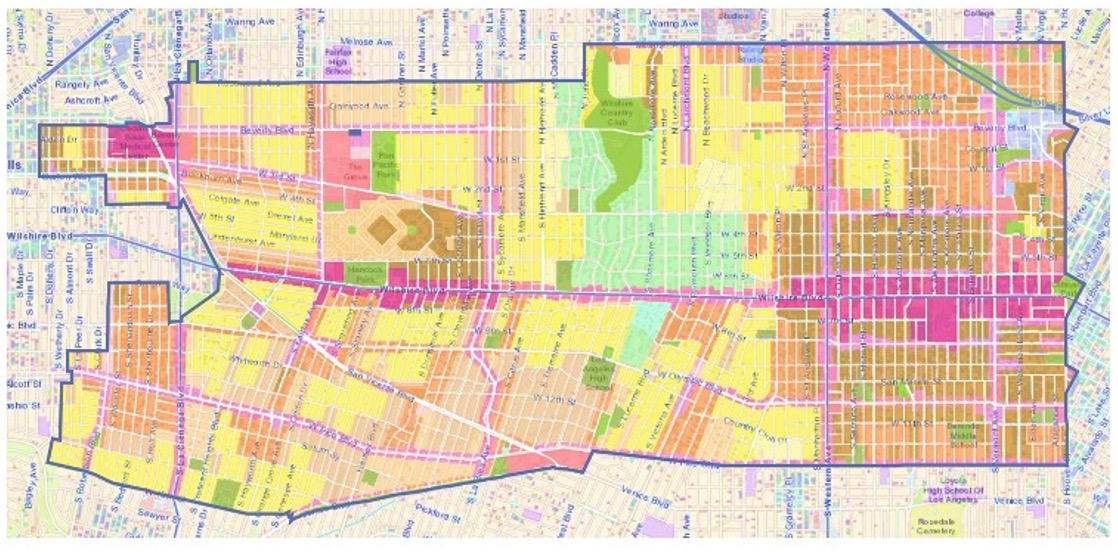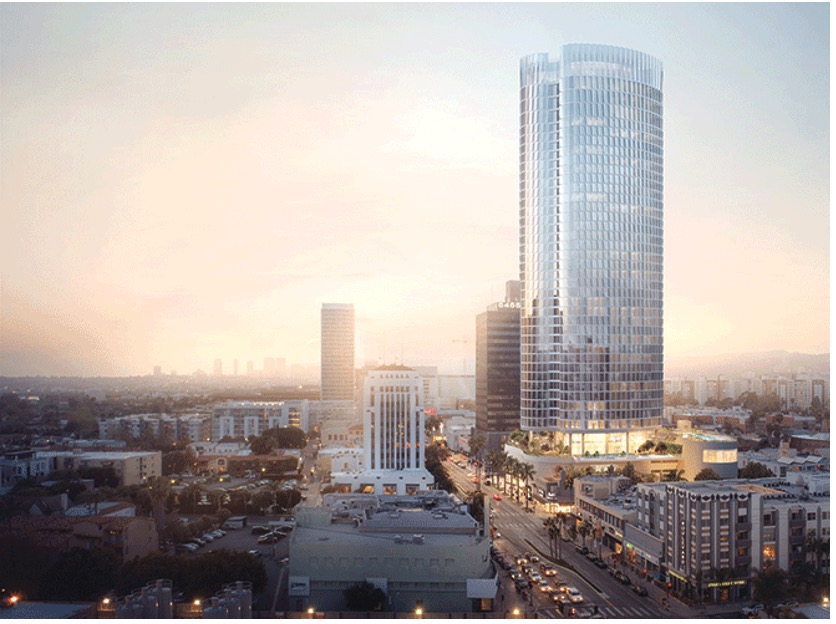Comments
PLANNING WATCH - Los Angeles is divided into 35 Community Plan areas. These plans are old, and like the Wilshire Community Plan, have aged poorly. Meanwhile 17 community plans in the Valley and West LA are slowly being updated. The update schedule for the remaining 18 plans is unknown. In addition, seven community plans must be updated a second time because the City Council directed LA’s Planning Department to update them every six years.
I live in the centrally located 21 year old Wilshire Plan area, shown here.

The City Council adopted this plan in an obviously different era. In 2002 LA’s infrastructure and public services were still reliable, and homelessness was concentrated in DTLA’s Skid Row area.
Oblivious to these and many other changes, the Los Angeles City Council has subsequently approved dozens of major projects in the Wilshire plan area. These projects require extra street capacity, on and off-site parking, electricity, water, sanitary sewers, storm drains, phone, and Internet. Unfortunately, the planning for these categories is over two decades old. As a result, the Wilshire area’s deficits will continue to get worse. Without new infrastructure planning and investment, the Wilshire plan area has already experienced repeated water main and sewer ruptures, electricity blackouts, broken sidewalks, and gridlocked streets.
Clearly, one consequence of this antiquated plan is the gap between desperately needed affordable housing versus market-based investment decisions to build extremely profitable luxury apartments. The second gap is the limited amount of new development the Wilshire area’s neglected infrastructure can support versus the large number of upscale apartment buildings that developers continue to churn out.
New Projects: Below are a sample of new developments under review or already completed in the western portion of the Wilshire Community Plan area. In addition to the hundreds of McMansions that have replaced older homes, adjacent commercial areas have been fundamentally changed by many new high-rise structures. Meanwhile proposed commercial and residential projects are lining up for City Council approvals. Once completed, these buildings will generate annual profits of 15 to 20 percent.
- CBS site at Beverly and Fairfax. The proposed TVC 2050 complex consists of 2,000,000 square feet (more than two Beverly Centers!) of potential movie and television production stages. Despite well-organized community opposition, this controversial project has requested City Council approval of a specific plan that allows many development options, not just production studios.
- METRO’s Purple Line subway extension on Wilshire Boulevard is a 9 mile long project costing $9.5 billion in pre-inflation 2021 dollars. Despite this enormous price tag, neither METRO or the City of Los Angeles have funded any proposed first-last mile public improvements. Without kiosks and bathrooms, car and bicycle parking, street furniture, landscaping, sidewalk repairs, and wayfaring signs, the subway’s ridership will scrape bottom. The many new up-scale apartments on this transit corridor will not be impacted, however, because their well-off tenants own and drive cars.

Rendering of Mirabel high-rise luxury tower.
- The proposed Mirabel high-rise luxury apartment tower, at 5411 Wilshire, may soon break ground. Its 42 stories will be 530 feet tall, soaring above surrounding neighborhoods. To obtain this extra height, the developer pledged to include 29 low-income units, knowing that LA’s Housing Department never physically inspects promised low-rent units and verifies tenants’ incomes.
- Cloverdale: Several blocks east of the Mirabel, at 5350-536 Wilshire, is a proposed 45 story high-rise apartment building. When completed, it will contain 419 market rate apartments and 47 extremely-low-income units.
- UCLA: At 5900 Olympic Boulevard, the UCLA Medical School is building a new neuropsychiatric hospital to replace the shuttered Olympia Medical Center.
- The Vision on Wilshire high rise apartment tower at 6245 Wilshire Boulevard opened five years ago and still has vacancies. Its studio apartments are a steal at $3,161 per month.
- At 6300 W. 3rd Street, a former Kmart store opposite The Grove is being replaced by a large luxury apartment complex.
- The revamped Los Angeles County Museum of Art, at 5905 Wilshire, will be smaller than the museum wings it replaces.
The downward spiral: These developments are just a sample of major projects proposed, approved, under construction, or completed in the Wilshire Community Plan Area. Because most of these projects require zone changes or zone variances, they have rendered the Wilshire Community Plan obsolete. Since the decisions to build these expensive apartments are based on turbulent market conditions, not the need for low cost housing, they make the housing crisis worse. The phony justification for these high-end projects, that they reduce homelessness, could not be further from the truth. The zoning waivers for these projects cause property values, rents, and homelessness to rise. The cure is far worse than the disease.
(Dick Platkin is a retired Los Angeles city planner who reports on local planning issues for CityWatchLA. He is a board member of United Neighborhoods for Los Angeles (UN4LA). Previous columns are available at the CityWatchLA archives. Please send questions and corrections to [email protected].)
















